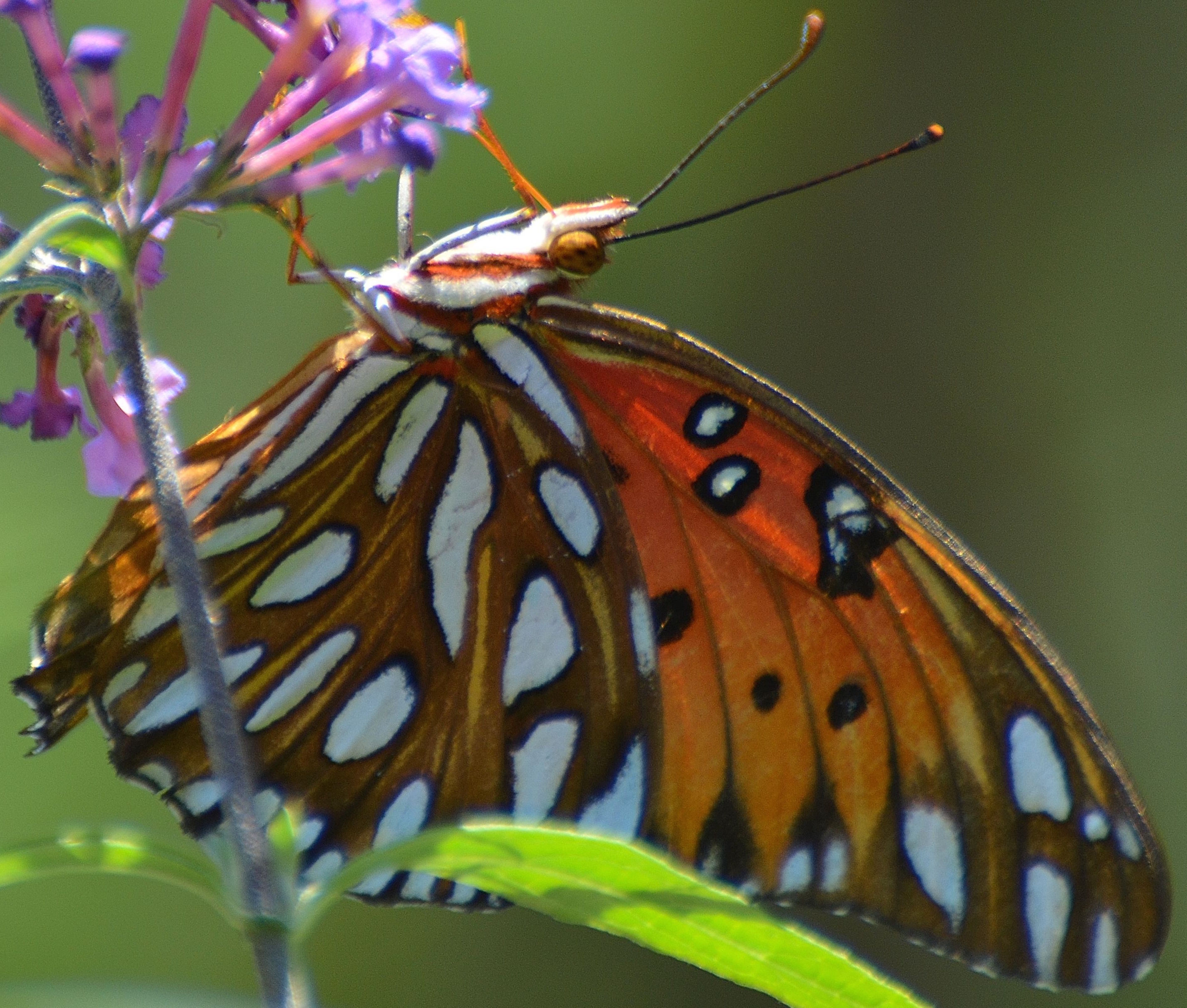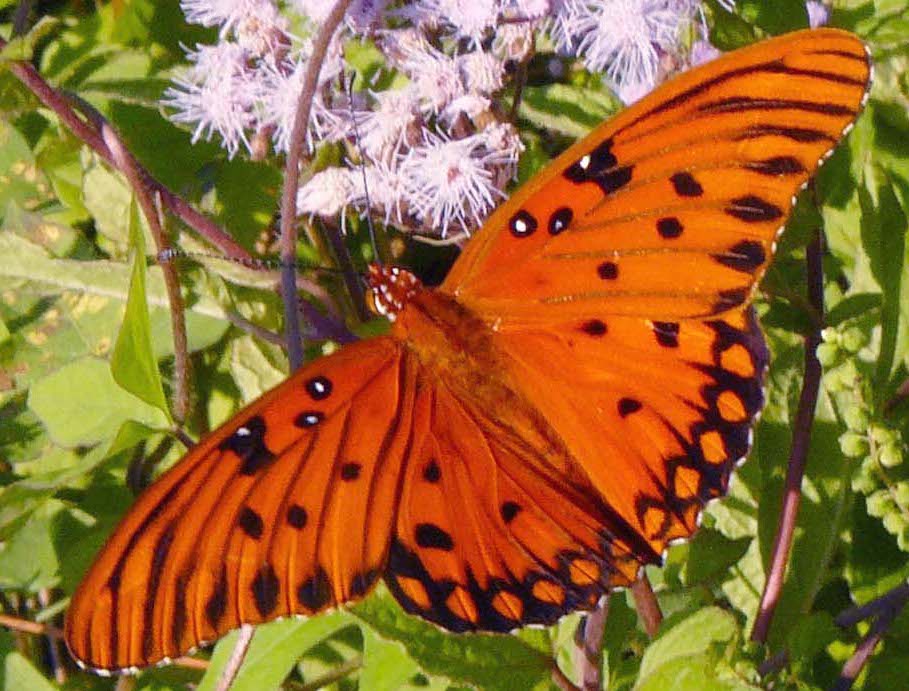| Aaron's Skipper - 45 |
| American Copper - 384 |
| American Lady - 7,212 |
| American Snout - 2,768 |
| Aphrodite Fritillary - 571 |
| Appalachian Azure - 163 |
| Appalachian Brown - 910 |
| Appalachian Tiger Swallowtail - 226 |
| Arogos Skipper - 22 |
| Baltimore Checkerspot - 64 |
| Banded Hairstreak - 583 |
| Barred Yellow - 19 |
| Berry's Skipper - 46 |
| Black Swallowtail - 3,132 |
| Brazilian Skipper - 222 |
| Broad-winged Skipper - 321 |
| Brown Elfin - 413 |
| Byssus Skipper - 258 |
| Cabbage White - 6,292 |
| Carolina Roadside-Skipper - 301 |
| Carolina Satyr - 5,315 |
| Cassius Blue - 8 |
| Ceraunus Blue - 3 |
| Checkered White - 349 |
| Clouded Skipper - 4,989 |
| Clouded Sulphur - 1,962 |
| Cloudless Sulphur - 7,897 |
| Cobweb Skipper - 108 |
| Cofaqui Giant-Skipper - 4 |
| Common Buckeye - 9,892 |
| Common Checkered-Skipper - 3,059 |
| Common Roadside-Skipper - 402 |
| Common Sootywing - 905 |
| Common Wood-Nymph - 1,823 |
| Compton Tortoiseshell - 3 |
| Confused Cloudywing - 227 |
| Coral Hairstreak - 328 |
| Creole Pearly-eye - 540 |
| Crossline Skipper - 1,806 |
| Crystal Skipper - 216 |
| Dainty Sulphur - 48 |
| Delaware Skipper - 869 |
| Diana Fritillary - 526 |
| Dion Skipper - 604 |
| Dorantes Longtail - 10 |
| Dotted Skipper - 135 |
| Dreamy Duskywing - 627 |
| Dukes' Skipper - 90 |
| Dun Skipper - 2,253 |
| Dusky Azure - 47 |
| Dusky Roadside-Skipper - 51 |
| Dusted Skipper - 301 |
| Early Hairstreak - 59 |
| Eastern Comma - 2,524 |
| Eastern Giant Swallowtail - 390 |
| Eastern Pine Elfin - 333 |
| Eastern Pygmy-Blue - 1 |
| Eastern Tailed-Blue - 8,928 |
| Eastern Tiger Swallowtail - 12,453 |
| Edwards' Hairstreak - 105 |
| Eufala Skipper - 755 |
| European Skipper - 17 |
| Falcate Orangetip - 1,908 |
| Fiery Skipper - 6,719 |
| Frosted Elfin - 94 |
| Funereal Duskywing - 4 |
| Gemmed Satyr - 1,740 |
| Georgia Satyr - 232 |
| Goatweed Leafwing - 3 |
| Golden Banded-Skipper - 103 |
| Gorgone Checkerspot - 9 |
| Gray Comma - 14 |
| Gray Hairstreak - 4,281 |
| Great Purple Hairstreak - 611 |
| Great Southern White - 6 |
| Great Spangled Fritillary - 2,692 |
| Green Comma - 96 |
| Grizzled Skipper - 16 |
| Gulf Fritillary - 2,008 |
| Hackberry Emperor - 1,763 |
| Harvester - 663 |
| Hayhurst's Scallopwing - 360 |
| Henry's Elfin - 623 |
| Hessel's Hairstreak - 135 |
| Hickory Hairstreak - 18 |
| Hoary Edge - 1,435 |
| Hobomok Skipper - 266 |
| Holly Azure - 381 |
| Horace's Duskywing - 3,723 |
| Incognito Crescent - 105 |
| Indian Skipper - 77 |
| Intricate Satyr - 45 |
| Juniper Hairstreak - 893 |
| Juvenal's Duskywing - 2,912 |
| King's Hairstreak - 184 |
| Lace-winged Roadside-Skipper - 698 |
| Large Orange Sulphur - 2 |
| Least Skipper - 3,079 |
| Leonard's Skipper - 87 |
| Little Glassywing - 1,811 |
| Little Metalmark - 177 |
| Little Wood-Satyr - 1,437 |
| Little Yellow - 1,710 |
| Loammi Skipper - 6 |
| Long Dash - 13 |
| Long-tailed Skipper - 1,520 |
| Meadow Fritillary - 817 |
| Meske's Skipper - 146 |
| Milbert's Tortoiseshell - 1 |
| Mimic - 6 |
| Mitchell's Satyr - 32 |
| Monarch - 5,993 |
| Mottled Duskywing - 117 |
| Mourning Cloak - 1,846 |
| Northern Broken-dash - 500 |
| Northern Cloudywing - 1,113 |
| Northern Pearly-eye - 1,322 |
| Oak Hairstreak - 134 |
| Ocola Skipper - 3,353 |
| Olympia Marble - 68 |
| Orange Sulphur - 4,906 |
| Orange-barred Sulphur - 2 |
| Painted Lady - 1,745 |
| Palamedes Swallowtail - 2,583 |
| Palatka Skipper - 138 |
| Pearl Crescent - 10,415 |
| Peck's Skipper - 502 |
| Pepper and Salt Skipper - 220 |
| Phaon Crescent - 217 |
| Pipevine Swallowtail - 2,956 |
| Queen - 246 |
| Question Mark - 3,864 |
| Rare Skipper - 30 |
| Red Admiral - 4,503 |
| Red-banded Hairstreak - 3,817 |
| Red-spotted Purple - 5,600 |
| Regal Fritillary - 6 |
| Reversed Roadside-Skipper - 151 |
| Sachem - 5,318 |
| Salt Marsh Skipper - 432 |
| Silver-spotted Skipper - 9,574 |
| Silvery Blue - 153 |
| Silvery Checkerspot - 1,482 |
| Sleepy Duskywing - 701 |
| Sleepy Orange - 7,487 |
| Soldier - 2 |
| Southern Broken-dash - 1,190 |
| Southern Cloudywing - 1,625 |
| Southern Dogface - 25 |
| Southern Pearly-eye - 1,008 |
| Southern Skipperling - 664 |
| Spicebush Swallowtail - 5,919 |
| Spring Azure - 1,278 |
| Striped Hairstreak - 156 |
| Summer Azure - 5,705 |
| Swarthy Skipper - 1,286 |
| Tawny Crescent - 81 |
| Tawny Emperor - 840 |
| Tawny-edged Skipper - 705 |
| Texan Crescent - 3 |
| Tropical Checkered-Skipper - 31 |
| Twin-spot Skipper - 190 |
| Two-spotted Skipper - 47 |
| Variegated Fritillary - 5,613 |
| Viceroy - 2,160 |
| West Virginia White - 380 |
| Whirlabout - 1,161 |
| White Checkered-Skipper - 12 |
| White Peacock - 25 |
| White-M Hairstreak - 580 |
| Wild Indigo Duskywing - 706 |
| Yehl Skipper - 415 |
| Yucca Giant-Skipper - 169 |
| Zabulon Skipper - 3,244 |
| Zarucco Duskywing - 836 |
| Zebra Longwing - 126 |
| Zebra Swallowtail - 2,401 |

 >>
>>




